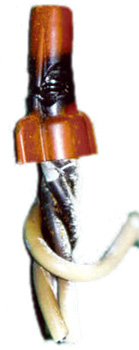Aluminum wiring
Aluminum wiring is fast becoming one of GTA biggest residential electrical issues and we have spent a great deal of time researching the various options available to homeowners and have the best solutions to make your home’s electrical system safer.
Aluminum wiring was outlawed in Canada in the late 1970s, because it expands and contracts more than copper wire, which leads to loose connections, arcing, melting and ultimately fire. Also, aluminum wire corrodes much more easily than copper wire, which causes the breakdown of the wire, particularly at its points of connection.
Getting Insurance
It’s no surprise insurance companies are increasing premiums or outright denying coverage to people who have houses wired with aluminum and it’s also no surprise that many new home buyers avoid these houses altogether. Is it really that bad? Unfortunately, it can be a very serious fire hazard in the home:

Since many insurance companies are requiring inspections and repairs before providing insurance to new homeowners we are often asked if we can write clients a letter indicating their aluminum wiring is safe.
As you can probably guess from the previous example there are no guarantees with the safety of aluminum wiring as its condition can change rapidly. As a result, we will not provide insurance letters indicating that this wiring is safe.
However, if you read below you may find a solution that not only meets your insurer’s requirements but also makes your home’s electrical system safer.
Is Aluminum Wiring Safe?
Aluminum wiring is an acceptable wiring choice if properly installed and used in the correct application. Aluminum is a good conductor of electricity. It is light weight, strong and much cheaper than copper. The power supply lines providing power to your home are aluminum as is almost the entire Hydro power grid. Today, stranded aluminum cable is usually used for main distribution wiring or feeder lines to bring electricity to the home. Aluminum wire itself is considered reliable when used in the right application and if it is carefully and correctly installed and maintained.
What’s Unsafe About Aluminum Wiring?
Aluminum wiring poses a fire hazard wherever it is spliced or makes a connection with an outlet, switch, circuit breaker, or other component of the electrical system. At connection points, aluminum wires shrink and expand with temperature changes. Over time, this movement can cause breaks in the circuit, as well as overheating, sparks, or fire.
- Although over 90% of your wiring is concealed behind the walls there are a few danger signs you should look out for: Warm to the touch faceplates

Do you know what’s happening behind that receptacle on your wall?
Some symptoms that may indicate aluminum wiring problems are:
- Flickering lights that cannot be traced to a failing bulb or other external cause
- Plugs that do not work even with the circuit energized
- Unusual static on the radio, TV or computer
- Switch plates and receptacles covers that are warped, discolored or warm
- Circuit breakers or fuses that trip for no apparent reason
- Strange odor similar to that of burning plastic around switches and receptacles
- Smoke or sparking around electrical devices
If you notice any of these problems, it is important to have a certified, electrical contractor check the electrical system as soon as possible. Each home is wired differently and must be assessed on an individual basis to determine the best and safest solution to this safety concern.
In an effort to update the appearance of the home, some homeowners have unknowingly compounded the problem by replacing dated plugs and switches with more modern looking “Decora style” devices which are not rated for use with aluminum wiring. This has created an additional safety concern as the incompatible parts cause electrical resistance, resulting in overheating and possibly a fire.
Is there a solution to my aluminum wiring problems?
Yes, Ontario homeowners have three ESA approved options, when addressing the concerns of aluminum wiring.
1. Installation of CO/ALR or AL/CU devices only.
This cost-effective method is a good start in improving the safety of your home’s electrical system. It involves replacing all the receptacles and switches in the home with ones that are rated for aluminum wiring. This takes care of both the metal expansion/contraction and corrosion issues. Unfortunately, this choice is limited to some older style, standard devices as the popular decorator style “Decora” devices and the new Tamper Resistant receptacles are not available in CO/ARC form. This method alone does not address connections in lighting fixtures.
CO/ALR Rated Devices
2. Copper Pigtails with Specialized Twist-On Connector.
The most common method of addressing this problem is bridging a new copper pigtail wire between the existing aluminum wire and any electrical device. This connection must be done using very specific wire connectors alongwith an applied anti-oxidant paste to increase conductivity and eliminate corrosion.
3. Complete home rewire using only copper wiring.
Obviously this is the best and safest long term solution to the aluminum wire dilemma. For obvious reasons, it is also the most labor intensive and costly method, with investments ranging from $7,000 to $15,000 plus, depending on the size of the home. Over all costs may possibly be decreased when rewiring is coordinated with other major or structural renovations.